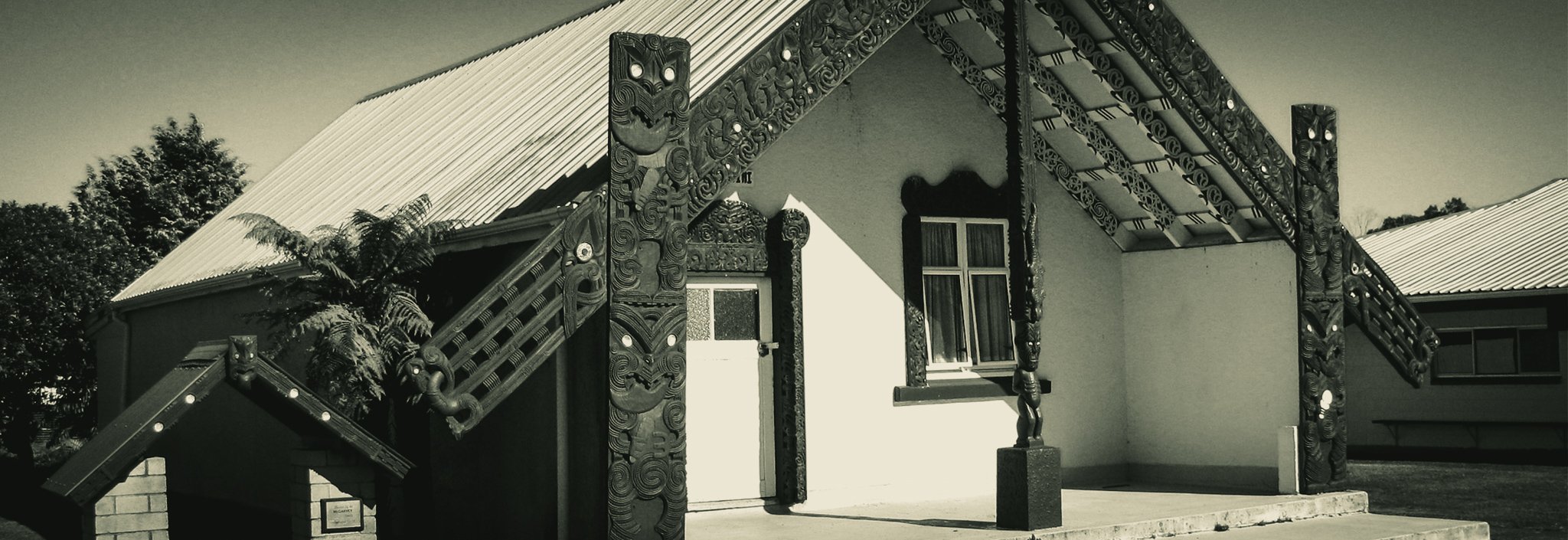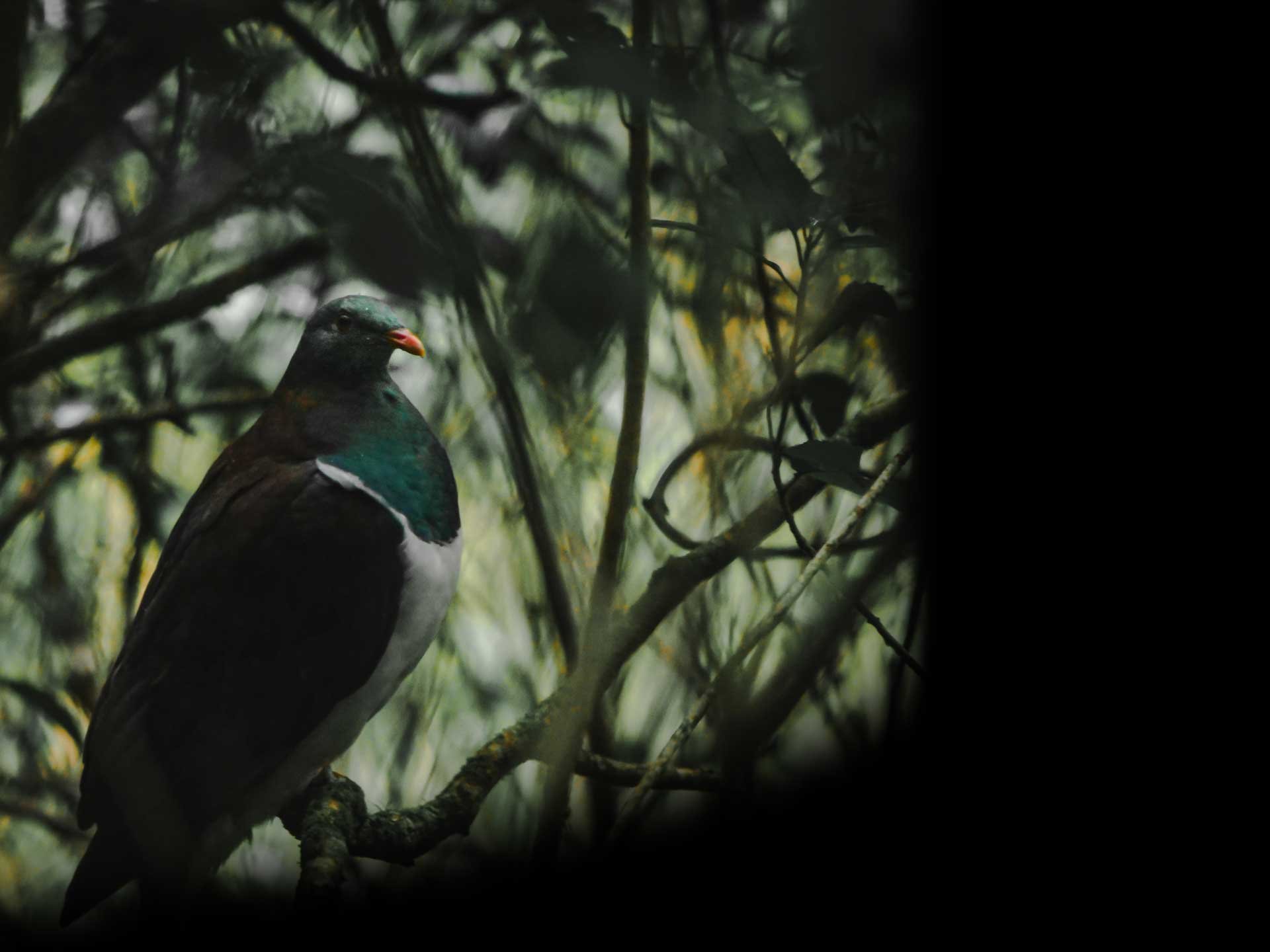
Hinemihi marae
(Te paparere - a - Ratorua)
Information about Hinemihi marae.
Ngāpuna, Rotorua
Kai Ngāpuna, kai runga i te whenua tuku o Ngāti Hurungaterangi tō mātau tūpuna kuia a Hinemihi e tū ana i ēnei rā. Ko Ngāti Hinemihi te hapū, ko Ngāti Tarāwhai me Tūhourangi ngā iwi.
I pēnei ai te kī nā te mea he nui ngā wehewehenga o Ngāti Hinemihi, arā, ehara mātou i te hapū heke iho mai i te tūpuna kotahi.

Hinemihi Ki Ngāpuna
E ai ki a Wikitōria Ngāmihikiteao Rangitakaiho Pene i puta ai te hiahia kia whakatū te wharenui o Hinemihi ki Ngāpuna i ngā tau tekau 1930.
I Ngāpuna e noho tahi ana ngā mōrehu o te hū o Tarawera (arā a Tūhourangi, a Ngāti Hinemihi) me te iwi kāinga a Ngāti Hurungaterangi, koromatua o Ngāti Whakaue. Nō te whakapuakitanga tērā ka whakatū anō a Hinemihi, ka ara ake he whakahē, ko te ingoa o Hinemihi te take. Kāore ngā kōeke o Ngāti Hurungaterangi i whakaae ki taua ingoa, ko tā rātau whakapae, Nāu e Mika Āporo i hoko atu taua tupuna ōu!’ Nā reira, ka noho tārewa te kaupapa.
Nā wai rā, ka kitea e Rāniera Kīngi rāua ko Kepa Ehau he rongoā, arā, ahakoa he hapū nō Tūhourangi a Ngāti Hinemihi, he uri hoki rātau nō Tarāwhai, ka tahi. Ka rua, kai a Ngāti Tarāwhai he tupuna kuia e kawe ana i te ingoa a Hinemihi:
Tarāwhai
Te Rangitakaroro
Hinemihi = Tarainoke
Hinewai
Ka mutu, i taua wā e tope rākau ana a Ngāti Tarāwhai ki Ōkataina, ā, ka whai pūtea hoki a Ngāti Hinemihi mai i ngā moni whiwhi. Ahakoa tērā ka hia tau a Ngāti Hinemihi e mahi moni ana, e tono moni ana mai i te Pōari o Te Arawa, kia taea ai te whakatū whare tupuna.
Ko ētehi o ngā whānau o Ngāti Hinemihi e pēnei ana: Epapara, Eparaima, Hamiora, Heretaunga, Hōri, Kereopa, Maika, Murray, Nuri, Pene, Rikihana, Ruha, Schuster, me ērā atu. Heoi anō i riro nā Fred rāua ko Ngātai Bubb te ārahitanga o Ngāti Hinemihi kia whakatū whare mō rātau.
Ka roa e mahi pūtea ana kātahi ka tīmata te hanga whare i te tau 1956, ā, ko Bunny Jacobs rātau ko Takirau Pene mā ngā kaihanga me te tini o ngā ringa āwhina.
Ko ngā poupou o roto he mea whakahoki mai i tāwāhi, arā, nō te whare o Tūhoromatakakā. I te tau 1910, nā Mākereti Papakura i kawe atu te whare o Tūhoromatakakā kia kitea e te ao. Nō muri iho i tana matenga i te tau 1930 ki Ingārangi, ka kitea aua poupou, ā, ka whakaritea e tana hunaonga a Rangitiaria (Guide Rangi) kia whakahokia mai ki te kāinga. Nā tētehi o ngā tino tohunga o Ngāti Tarāwhai a Tene Waitere i whakairo aua poupou.
Ko ngā turapa (tukutuku) o roto he mea hanga nā ngā ringa o Emily Schuster mā, engari nā te tumuaki o Te Kura o Whakarewarewa a David Alexander i tohutohu. Nōna hoki te hōnore kia whakatūwheratia ai te whare i te 20 o te marama tahi i te tau 1962. I kāhititia hoki a Hinemihi hai marae nō Ngāti Tarāwhai.
He nui ā Ngāti Hinemihi kōrero mō ō rātau tūpuna me ngā tūpuna whare e kawea ana te ingoa o aua tūpuna. Engari, kua rahi pea kia whakairi ake te kete kōrero i tēnei wā. Kāti.
These days at Ngāpuna, upon the gifted land of Ngāti Hurungaterangi stands our ancestral meeting house, Hinemihi. Ngāti Hinemihi is the subtribe, Ngāti Tarāwhai and Tūhourangi are the tribes we descend from. We acknowledge both of those tribes because there are many affiliations of Ngāti Hinemihi, that is to say, we are not a people who lineally descend from just one ancestor.
Hinemihi At Ngāpuna
According to our kuia Wikitōria Ngāmihikiteao Rangitakaiho Pene the desire to erect a meeting house called Hinemihi at Ngāpuna first became apparent in the 1930s.
According to our kuia Wikitōria Ngāmihikiteao Rangitakaiho Pene the desire to erect a meeting house called Hinemihi at Ngāpuna first became apparent in the 1930s.
The survivors of the Tarawera eruption (that is, Tūhourangi, Ngāti Hinemihi) were a the time living together with the local people Ngāti Hurungaterangi, one of the six major subsections of Ngāti Whakaue. When it was revealed that Hinemihi would be erected again, there surfaced dissent, and it was the name Hinemihi that was the problem. The elders of Ngāti Hurungaterangi did not agree to that name, their accusation was, ‘It was you Mika Āporo who sold that ancestor of yours!’ Tshat was why the issue remained dormant for some time.
After a while, Dan Kīngi and Kepa Ehau saw a solution, that was, firstly although Ngāti Hinemihi [2] was a subtribe of Tūhourangi they were all (due to intermarriage) descended from Tarāwhai. Secondly, Ngāti Tarāwhai also had an ancestress who carried the name of Hinemihi:
In addition, at that time Ngāti Tarāwhai were felling trees at Ōkataina, and Ngāti Hinemihi would be able to receive a fund from the revenue. Despite this windfall a large number of years were spent raising funds, including applying for a grant from the Te Arawa Trustboard, so the meeting house could be erected.
Some of the families of Ngāti Hinemihi are: Epapara, Eparaima, Hamiora, Heretaunga, Hōri, Kereopa, Maika, Murray, Nuri, Pene, Rikihana, Ruha, Schuster, and some others. However it was largely left to Fred and Ngātai Bubb to lead Ngāti Hinemihi in terms of organising the building project.
After a long time fundraising the actual building of the house commenced at the end of 1956, and, it was decided that Bunny Jacobs, Takirau Pene and others would build it along with the many helping hands of Ngāti Hinemihi.
The carved slabs inside the house were returned from overseas, that is, they were once part of the house Tūhoromatakakā. In 1910, Maggie Papakura had taken the house Tūhoromatakakā to be seen by the world. After her death in 1930 in England, those carved slabs were discovered, and, it was arranged by her daughter-in-law Rangitiaria to bring them back home. The poupou had all been carved by the skilled hands of Ngāti Tarāwhai’s Tene Waitere.
The ornamental lattice-work inside the house were made by the hands of Emily Schuster and others, however it was under the direction of the principal of Whakarewarewa School, David Alexander. It was he also who was given the honour of opening the whare on the 10th of January 1962. Hinemihi was also gazetted as a marae of Ngāti Tarāwhai.
There are many more stories Ngāti Hinemihi has regarding both their ancestors and the meeting houses that carried the name of those ancestors. However, this is enough let me hang up the kit of stories at this time. Enough.
[1] Ko rāua ētehi o ngā tino rangatira o Ngāti Whakaue i aua wā, ka mutu nō Ngāti Tarāwhai tūturu a Kepa Ehau.
[2] Under cross-examination by Mika Āporo, Mikaere Heretaunga of Ngāti Rangitihi (10/09/1891; 828) stated:
‘Tūhourangi and Ngāti Rangitihi were first separated a long time ago. During Rākeiao’s and Āpumoana’s time, it first took place. Ngāti Hinemihi are Tūhourangi and Ngāti Rangitihi as well. Now they are called Tūhourangi though formerly Ngāti Rangitihi.’


